Earthquakes are among nature’s most destructive forces, capable of reshaping coastlines and triggering tsunamis within minutes. The 8.8 magnitude earthquake off Russia’s Kamchatka Peninsula in 2025 rattled buildings, triggered Pacific-wide tsunami alerts, and revived discussions about historic seismic disasters. According to the US Geological Survey (USGS), this event now ranks among the strongest earthquakes ever recorded, alongside catastrophic tremors from Chile to Japan. Such high-magnitude earthquakes often leave behind widespread devastation, loss of life, and long-term environmental impact.
Explore the top 10 most powerful earthquakes in history, their magnitudes, and their far-reaching consequences on human civilization.
List of 10 strongest earthquakes ever in recorded history
World’s most powerful earthquakes
Valdivia, Chile – 1960 (Magnitude 9.5)
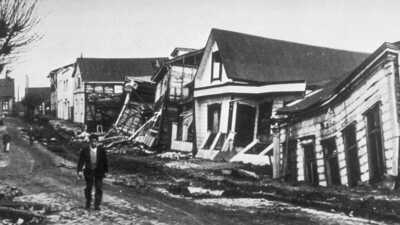
The Valdivia earthquake is the most powerful ever recorded, shaking southern Chile with catastrophic force. It triggered Pacific-wide tsunamis reaching Japan and the Philippines. Over 1,600 people died, thousands were injured, and infrastructure damage was widespread. Coastal areas were permanently reshaped, and the disaster led to advances in earthquake monitoring and international tsunami warning systems, setting global standards for seismic risk management.
Prince William Sound, Alaska – 1964 (Magnitude 9.2)
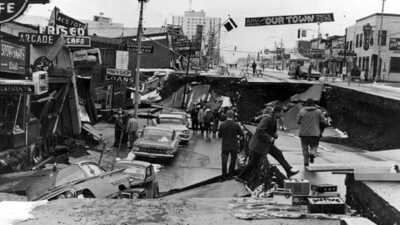
Known as the Great Alaska Earthquake, it lasted almost five minutes and altered large parts of the Alaskan landscape. The quake triggered massive landslides and a destructive tsunami, causing over 130 deaths and extensive property loss. It remains the most powerful earthquake in U.S. history and contributed to the development of seismic-resistant building codes and improved understanding of subduction zone earthquakes.
Sumatra, Indonesia – 2004 (Magnitude 9.1)

This undersea megathrust earthquake caused one of the deadliest natural disasters ever, claiming over 230,000 lives across 14 countries. The resulting tsunami devastated coastal regions of Indonesia, Sri Lanka, India, and parts of East Africa. It displaced millions, destroyed infrastructure, and reshaped coastlines. The event sparked a global push for tsunami early warning systems, changing how nations prepare for seismic oceanic events.
Tohoku, Japan – 2011 (Magnitude 9.1)
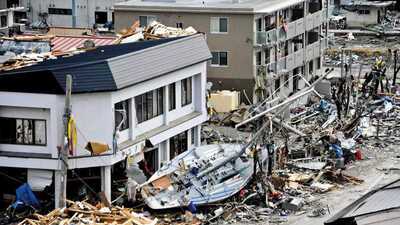
The Tohoku earthquake triggered a massive tsunami that inundated Japan’s northeast coast, killing over 18,000 people and causing the Fukushima nuclear disaster. Thousands of homes, roads, and railways were destroyed, and entire towns were wiped out. The catastrophe led to stronger nuclear safety regulations and advancements in disaster response, making it one of the most consequential quakes of the 21st century.
Kamchatka, Russia – 1952 (Magnitude 9.0)
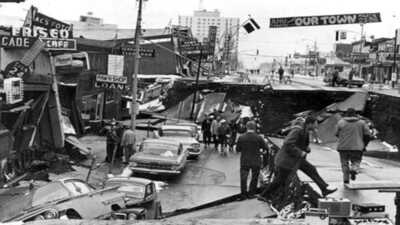
The Kamchatka earthquake struck the Russian Far East, generating a Pacific-wide tsunami with waves up to 30 feet, impacting Hawaii and Japan. Though fatalities were limited due to sparse population, property damage in coastal areas was significant. It demonstrated the seismic volatility of the Pacific Ring of Fire and prompted greater research into tectonic activity in the Russian region and beyond.
Kamchatka Peninsula, Russia – 2025 (Magnitude 8.8)

This modern quake rattled the Kamchatka Peninsula, prompting tsunami warnings across the Pacific from Japan to Hawaii. Buildings swayed, evacuations ensued, and early footage showed widespread panic near the epicenter. While casualty reports are still being assessed, it’s the strongest quake in Russia in over 70 years, reinforcing concerns about seismic risks in the volatile Pacific Rim and prompting renewed disaster preparedness efforts.
Maule, Chile – 2010 (Magnitude 8.8)
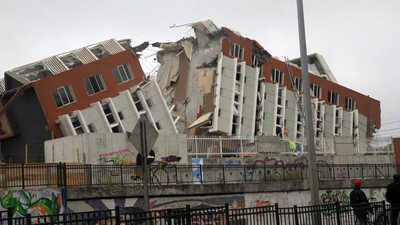
The Maule earthquake struck central Chile, killing over 500 people and damaging highways, bridges, and power infrastructure. The quake lasted 90 seconds and triggered a tsunami that destroyed coastal towns. Economic losses were immense, amounting to billions of dollars. Chile’s response and recovery efforts, including rapid rebuilding, showcased its earthquake resilience and improved building code enforcement in one of the world’s mostseismically active regions.
Esmeraldas, Ecuador – 1906 (Magnitude 8.8)
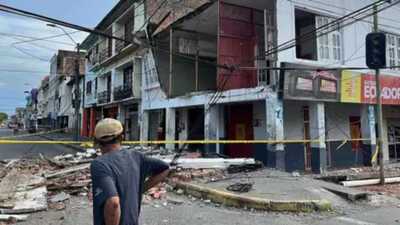
This powerful quake struck off Ecuador’s coast, triggering a massive tsunami felt across Central America, California, and Japan. Around 1,500 lives were lost, mostly due to flooding and collapsing buildings. It remains one of the deadliest disasters in Ecuador’s history. The earthquake highlighted the seismicvulnerability of the Pacific coast of South America and drove early international awareness of tsunami hazards.
Rat Islands, Alaska – 1965 (Magnitude 8.7)

The Rat Islands earthquake hit the remote Aleutian chain, producing a 35-foot tsunami that spread across the Pacific. Due to the region’s isolation, there were no mass casualties, but military installations and structures suffered damage. It reaffirmed Alaska’s position as one of the most seismically active regions and provided key data for studying subduction zone quakes and associated tsunami behavior.
Tibet – 1950 (Magnitude 8.6)
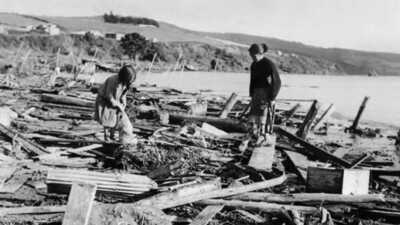
The Tibet-Assam earthquake devastated villages along the Tibet-India border, killing at least 780 people. It triggered landslides that buried communities and caused massive flooding when a natural dam burst days later, sending a 23-foot wall of water downstream. Its impact extended beyond immediate destruction, highlighting the dangers of seismic activity in mountainous regions prone to secondary disasters like landslides and dam collapses.
Also Read | World’s first rare blood group found in Bangalore woman, marking a historic medical discovery
Explore the top 10 most powerful earthquakes in history, their magnitudes, and their far-reaching consequences on human civilization.
List of 10 strongest earthquakes ever in recorded history
World’s most powerful earthquakes
Valdivia, Chile – 1960 (Magnitude 9.5)
The Valdivia earthquake is the most powerful ever recorded, shaking southern Chile with catastrophic force. It triggered Pacific-wide tsunamis reaching Japan and the Philippines. Over 1,600 people died, thousands were injured, and infrastructure damage was widespread. Coastal areas were permanently reshaped, and the disaster led to advances in earthquake monitoring and international tsunami warning systems, setting global standards for seismic risk management.
Prince William Sound, Alaska – 1964 (Magnitude 9.2)
Known as the Great Alaska Earthquake, it lasted almost five minutes and altered large parts of the Alaskan landscape. The quake triggered massive landslides and a destructive tsunami, causing over 130 deaths and extensive property loss. It remains the most powerful earthquake in U.S. history and contributed to the development of seismic-resistant building codes and improved understanding of subduction zone earthquakes.
Sumatra, Indonesia – 2004 (Magnitude 9.1)

This undersea megathrust earthquake caused one of the deadliest natural disasters ever, claiming over 230,000 lives across 14 countries. The resulting tsunami devastated coastal regions of Indonesia, Sri Lanka, India, and parts of East Africa. It displaced millions, destroyed infrastructure, and reshaped coastlines. The event sparked a global push for tsunami early warning systems, changing how nations prepare for seismic oceanic events.
Tohoku, Japan – 2011 (Magnitude 9.1)
The Tohoku earthquake triggered a massive tsunami that inundated Japan’s northeast coast, killing over 18,000 people and causing the Fukushima nuclear disaster. Thousands of homes, roads, and railways were destroyed, and entire towns were wiped out. The catastrophe led to stronger nuclear safety regulations and advancements in disaster response, making it one of the most consequential quakes of the 21st century.
Kamchatka, Russia – 1952 (Magnitude 9.0)
The Kamchatka earthquake struck the Russian Far East, generating a Pacific-wide tsunami with waves up to 30 feet, impacting Hawaii and Japan. Though fatalities were limited due to sparse population, property damage in coastal areas was significant. It demonstrated the seismic volatility of the Pacific Ring of Fire and prompted greater research into tectonic activity in the Russian region and beyond.
Kamchatka Peninsula, Russia – 2025 (Magnitude 8.8)

This modern quake rattled the Kamchatka Peninsula, prompting tsunami warnings across the Pacific from Japan to Hawaii. Buildings swayed, evacuations ensued, and early footage showed widespread panic near the epicenter. While casualty reports are still being assessed, it’s the strongest quake in Russia in over 70 years, reinforcing concerns about seismic risks in the volatile Pacific Rim and prompting renewed disaster preparedness efforts.
Maule, Chile – 2010 (Magnitude 8.8)
The Maule earthquake struck central Chile, killing over 500 people and damaging highways, bridges, and power infrastructure. The quake lasted 90 seconds and triggered a tsunami that destroyed coastal towns. Economic losses were immense, amounting to billions of dollars. Chile’s response and recovery efforts, including rapid rebuilding, showcased its earthquake resilience and improved building code enforcement in one of the world’s mostseismically active regions.
Esmeraldas, Ecuador – 1906 (Magnitude 8.8)
This powerful quake struck off Ecuador’s coast, triggering a massive tsunami felt across Central America, California, and Japan. Around 1,500 lives were lost, mostly due to flooding and collapsing buildings. It remains one of the deadliest disasters in Ecuador’s history. The earthquake highlighted the seismicvulnerability of the Pacific coast of South America and drove early international awareness of tsunami hazards.
Rat Islands, Alaska – 1965 (Magnitude 8.7)

The Rat Islands earthquake hit the remote Aleutian chain, producing a 35-foot tsunami that spread across the Pacific. Due to the region’s isolation, there were no mass casualties, but military installations and structures suffered damage. It reaffirmed Alaska’s position as one of the most seismically active regions and provided key data for studying subduction zone quakes and associated tsunami behavior.
Tibet – 1950 (Magnitude 8.6)
The Tibet-Assam earthquake devastated villages along the Tibet-India border, killing at least 780 people. It triggered landslides that buried communities and caused massive flooding when a natural dam burst days later, sending a 23-foot wall of water downstream. Its impact extended beyond immediate destruction, highlighting the dangers of seismic activity in mountainous regions prone to secondary disasters like landslides and dam collapses.
Also Read | World’s first rare blood group found in Bangalore woman, marking a historic medical discovery
You may also like

Sreeleela dedicates Bhagvanth Kesari win to daughters who dream big

Seoul shares sink at steepest pace in 4 months, won dips to near 3-month low

Personal Loan Rejected Repeatedly? Follow These 3 Simple Tips to Instantly Boost Your Credit Score

Blackpink tickets drop to £95 ahead of Wembley Stadium shows

Coal India Reports 6% Drop In Production At 229.8 Million Tonnes, Government Determined To Increase Output To Cut Imports







